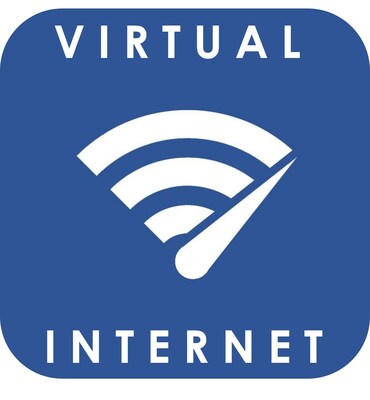V5G gives users visibility into Provider Performance
V5G users now better able to manage Service Providers and Device Investments
SINGAPORE and SAN JOSE, Calif., April 8, 2024 /PRNewswire/ — Virtual Internet has announced Virtual 5G Service Provider Control, enabling V5G Users with the insight to manage the Service Provider and Device selections. For the first time ever, a Global 5G Cloud Service has given End Users the power to choose the right Provider, Data Plan and Device Manufacturer and Model for where they reside and how they live and work.
Virtual 5G –The Global 5G Cloud
Virtual 5G is a Global 5G Cloud, which runs over every Physical Network in the world. Virtual 5G works over any connectivity (Wi-Fi, Cellular Radio, Satellite) any connection medium at all. Virtual 5G uniquely delivers Global 5G service over any service provider network, even when the underlying Service Provider connection is not 5G, to End User devices that are also not 5G. This makes Virtual 5G the best and most cost efficient 5G service anywhere in the world today.
Virtual 5G Service Provider Control
Because the device and the underlying service provider network likely represents the largest technology financial commitments an End User makes, Virtual 5G has now implemented Service Provider Control, enabling End User’s to have real time visibility into the quality, consistency and performance of their service providers and their phones and tablets. Virtual 5G Service Provider Control displays the information an End User needs to determine how well they are being served by their investment in their Service Providers and their Devices.
Service Provider Control displays information you need about the physical networks, Wi-Fi, Cellular Radio, Satellite, to which your device(s) connect.
Network and Device Visibility
Service Provider Control informs the End User in real time of the available network options, which networks function as Primary and which as Secondary, even Tertiary Connection options, shows the underlying signal strength and carrier signal speed capability of the networks and devices, enables End Users visibility into Network infrastructure and even Technology generation, Frequencies used, IP Address, GPS and Location, Distance, Signal Levels, Heading and Network node Bearing data, Data consumed, important for their Data plan, Protocol Connection Type, as well as visibility into Device operations, the distribution and load upon CPUs and Cores from foreground and background operations, from Networking and encryptions, where processor intensive Service Provider 5G infrastructure causes associated drain on battery life.
The Importance of Visibility into Underlying Physical Service Provider Networks
According to the California-based company Grand View Research, the global 5G infrastructure market size (valued at $1.9B in 2019) is expected to reach $496.6B by 2027.
Despite impressive headline speeds, 5G performance varies –a lot. While globally 5G speeds have remained stable, for many of the markets in recent analyses, median 5G download speeds have fallen over the past few years. In-market 5G performance varies widely. Reviewing the top 10% and worst 10% of Ookla® Speedtest Intelligence® samples reveals significant variance in the consumer experience on today’s 5G networks. With 5G speeds falling to below 20 Mbps for the lower 10% in Norway, the U.S., Japan, Germany, and Spain and in fact, 5G download speeds in the U.S. hover around 100Mbps. Median 5G performance is declining in many early launch 5G markets. Declining median download speeds also point to investment and deployment challenges in some markets. At the same time, many of these markets are facing economic headwinds, placing more emphasis than ever on cost control. As a result, End Users must carefully select network investments, pairing Virtual 5G with the best Network for them based on where they live and work.
Virtual 5G Service Provider Control is critical in many ways
Virtual 5G helps End Users select the best Networks and Devices. 5G infrastructure is predominantly made up of a combination of Radio Access Network (RAN), core network, and backhaul and transport, with the backhaul and transport network including fiber optics or microwave antennas. 5G is only Cellular Radio technology. 5G is not as widespread as 4G, and there are many areas where 5G simply doesn’t exist or is unavailable. Even when a 5G phone connects to a tower that supports 5G, most times the network will switch to a 4G connection for multiple reasons. Often the network is so overpopulated with devices, rush hour commutes, populated cities, concerts, holiday gatherings, sporting events, dropping the device to a 4G connection results in better speeds than native service provider 5G.
Virtual 5G Service Provider Control –just 2 of many Use Cases
Managing your Network connections and Service Provider selections are just a few of the reasons why End Users need the visibility of Virtual 5G Service Provider Control. Users can determine which Providers are best, and most importantly which are best for them and their technology budgets. Moreover, End Users need to see how their underlying network is operating, this better enables them to appreciate the increase in Performance, and Reliability that Virtual 5G delivers to them Worldwide, over all networks and connection types.
Device Visibility
Virtual 5G Service Provider Control enables gathering Android hardware data and valuable insights into your device’s operations, enabling Virtual 5G users to make selections that troubleshoot service provider issues and optimize performance. Android OEMs launch new devices constantly; with so many device options end users can be confused. Varied Android phones, even those with similar retail branding, can have different specifications. Virtual 5G Service Provider Control gives real time operational data, which goes further than just the memory and internal storage specifications in making optimal device selections.
Network Visibility
Virtual 5G’s delivery of Reliable Global 5G is critical in many ways, from enabling secure online Healthcare, to Communications. Virtual 5G Service Provider Control’s ability to deliver visibility into the underlying network is also critical.
In most of the world Electric Vehicle re-charging stations are few and far between, and finding one depends on orienting you device towards the network nodes with the strongest signal, and potentially traveling to the closest network access point in order to locate and reserve charging service for your EV. The car connectivity is not the only type at risk, in most of the world, the EV is a motorbike, and the Phone is the vehicle connectivity. Virtual 5G and Virtual 5G Service Provider Control can be the difference in successfully reaching charging resources in time.
About Virtual Internet Pte. Ltd.
Virtual Internet is a metaverse company, incorporated in Singapore. Virtual Internet is building a new community of millions of users, connected through multiple networks. Virtual Internet has created and operates on its own Virtual 5G Global Overlay Network, which allows millions of other applications and services to be delivered over 5G Mobile Broadband Speeds using existing Cellular Radio, Wi-Fi, and SATCOM networks.
Contact: PR@adaranetworks.com
![]() View original content to download multimedia:https://www.prnewswire.com/news-releases/virtual-internet-announces-virtual-5g-service-provider-control-302109925.html
View original content to download multimedia:https://www.prnewswire.com/news-releases/virtual-internet-announces-virtual-5g-service-provider-control-302109925.html
SOURCE Virtual Internet Pte. Ltd.

Featured image: DepositPhotos © Neliana










